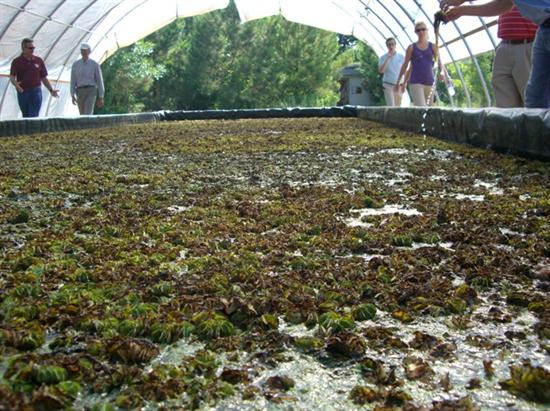Blog
Reps. Fleming and Gohmert Tour Giant Salvinia Infestation on Caddo Lake
WASHINGTON, D.C.,
June 29, 2011
|
Crystal Feldman
 On Monday, the Subcommittee on Fisheries, Wildlife, Oceans and Insular affairs held a field hearing in Shreveport, Louisiana on the giant salvinia - a free-floating aquatic invasive fern. It sits just below the water surface blocking out sunlight below and therefore killing everything beneath the water’s surface. It grows at a rapid rate by cloning itself and has been found to cover 40 square miles in three months. Resilient to many control methods, experts are desperately searching for ways to manage and eradicate giant salvinia. Current practices in use are chemical, mechanical, and biological control methods. Experts agreed at the field hearing that a comprehensive control plan must be implemented for best results. On Monday, the Subcommittee on Fisheries, Wildlife, Oceans and Insular affairs held a field hearing in Shreveport, Louisiana on the giant salvinia - a free-floating aquatic invasive fern. It sits just below the water surface blocking out sunlight below and therefore killing everything beneath the water’s surface. It grows at a rapid rate by cloning itself and has been found to cover 40 square miles in three months. Resilient to many control methods, experts are desperately searching for ways to manage and eradicate giant salvinia. Current practices in use are chemical, mechanical, and biological control methods. Experts agreed at the field hearing that a comprehensive control plan must be implemented for best results.
Following the field hearing, Subcommittee Chairman John Fleming (LA-01), Administration, state and local experts traveled over the border to Caddo Lake in Uncertain, Texas to for a boat tour of areas on the Lake plagued with the aquatic pest. Caddo lake is 26,000 acres, the oldest public lake in Texas and the state’s only natural public lake. Giant salvinia was first discovered in the Lake in 2006 and has since grown from 2 acres to over 1,000 acres. There is a coordinated effort by the Administration, state and local experts to eradicate giant salvinia on the lake by employing chemical and biological control methods. One of the most successful methods thus far has been the disbursement of the salvinia weevil, a natural predator to giant salvinia. The Caddo Lake Giant Salvinia Eradication project recently established a salvinia weevil rearing facility near the lake to serve as a ready source of weevils for release on the Caddo Lake. The facility breeds weevils in large vats filled with giant salvinia to be released in infected areas on Caddo Lake and surrounding water bodies. |
Newsletter Sign Up
Sign up to receive news, updates and insights directly to your inbox.

